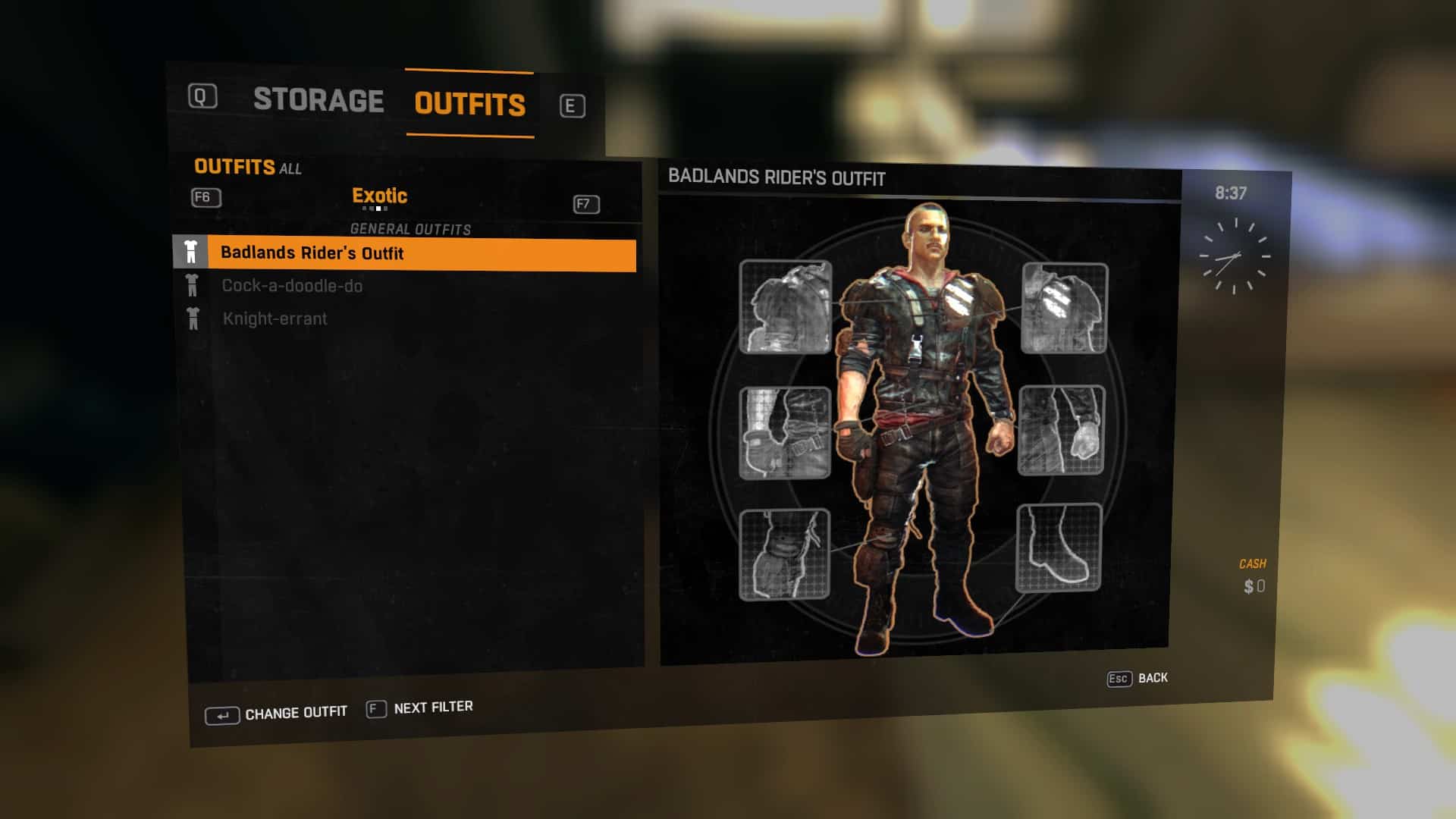

- #DYING LIGHT THE FOLLOWING ALL OUTFITS MOD#
- #DYING LIGHT THE FOLLOWING ALL OUTFITS UPGRADE#
- #DYING LIGHT THE FOLLOWING ALL OUTFITS MODS#
These are similar to One-Handed Axe, but deal increased amount of damage and take a longer to swing. I would recommend aiming for the heads when using these. You will find yourself using them during early game. These weapons deal decent damage at medium-range. Electricity – Increased chances of stunning an enemy.
 Toxicity – Damage over Time to living or infected characters.
Toxicity – Damage over Time to living or infected characters. 
 Burning – Damage over Time to living or infected characters.
Burning – Damage over Time to living or infected characters. #DYING LIGHT THE FOLLOWING ALL OUTFITS UPGRADE#
Similar to Upgrade Mods, Blueprints also add different modifications to a weapon: You can refer to my Dying Light Blueprint Locations and Crafting Recipes for more information.
Templar – Durability (Level 1), Handling (Level 2)īlueprints, on the other hand, do not require an Upgrade Slot, but different crafting components. Pit Fighter – Damage (Level 1), Handling (Level 1). Paladin – Durability (Level 2), Handling (Level 2). Mercenary – Damage (Level 1), Durability (Level 2). Knight – Durability (Level 2), Handling (Level 1). Duelist – Damage (Level 1), Handling (Level 2). Crusader – Durability (Level 1), Handling (Level 1). Brute – Damage (Level 2), Durability (Level 1). Bruiser – Damage (Level 2), Handling (Level 1). Brawler – Damage (Level 2), Handling (Level 2). Berserker – Damage (Level 1), Handling (Level 1). Barbarian – Damage (Level 2), Durability (Level 2). #DYING LIGHT THE FOLLOWING ALL OUTFITS MODS#
Different Upgrade Mods increase different stats (Damage, RoF, Handling, etc.) and some even increase multiple stats.įollowing is a list of all Upgrade Mods that can be found in the game along with their respective upgrades:
#DYING LIGHT THE FOLLOWING ALL OUTFITS MOD#
If the weapon you wish to upgrade has an empty Upgrade Slot, go to your Inventory and select the Upgrade Mod you wish to apply. A weapon of higher quality will have more Upgrade Slots than a weapon of low quality. Every weapon in the game has Upgrade Slots. Weapons are upgraded in two ways: Blueprints and Upgrade Slots – both of which can be found scattered across the game’s open-world. Although this method is not as good as selling a weapon, sometimes you will need Metal Parts on the go and this where it comes in handy. The acquired Metal Parts can be used to repair other items. Doing so will grant you with crafting component (Metal Parts).
Violet – Most uncommon weapons with even higher statsīreaking Weapons to Receive Crafting ComponentsĪfter you are done using a weapon, you can visit your Inventory and decide to dismantle a weapon. Blue – Uncommon weapons with higher stats. A rare weapon will always have better stats (damage, durability, handling, upgrades, repairs, and value).įollowing is a quick overview of different rarities: Weapons are categorized according to their quality/rarity. Not all weapons in Dying Light are alike. In this guide, I will provide a quick overview of every weapon along with some important concepts that will enable you understand your weapons in a more effective manner. It is a good idea to have a combination of different weapons – an Assault Rifle, a Two-Handed Weapon, a One-Handed Weapon, and something of your own choice.įor more help on Dying Light, read our Dying Light Blueprints Locations, Dying Light Crafting and Character Progression Guide. You can equip four weapons at the same time and switch among them. Weapons are mostly locked inside vehicles and buildings. You will often come across these weapons scattered in the game’s open-world, but not openly as random crafting components. Dying Light boasts a large array of weapons ranging from Baseball Bat to Assault Rifles.








 0 kommentar(er)
0 kommentar(er)
